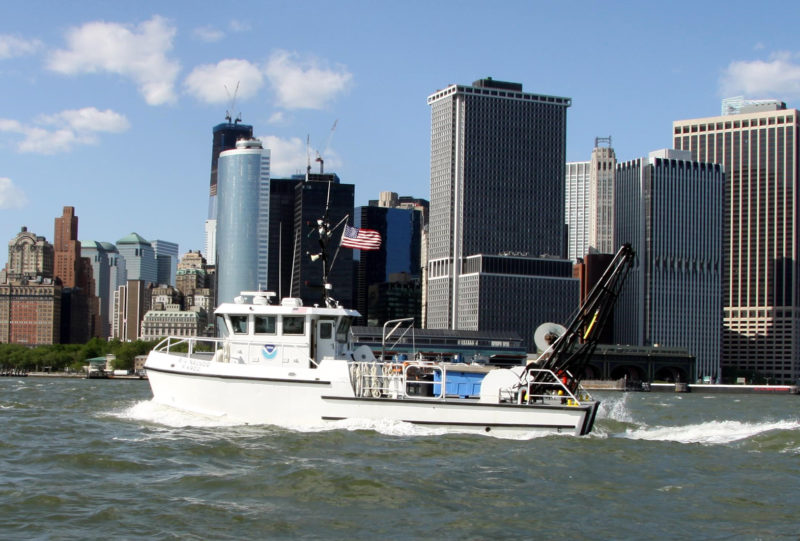A former Coast Guard buoy tender turned research vessel is getting a second makeover from Monmouth University in New Jersey.
The 49.6’x16.8’x5.6’ Nauvoo was originally acquired by the National Oceanic and Atmospheric Administration in 2002, and had been used for fisheries science and other survey work at NOAA’s Northeast Fisheries Science Center Laboratory at Sandy Hook, N.J.
But for three years the Nauvoo was laid up at the Yank Marine yard in Dorchester, N.J..
“We heard back in 2016 they might be looking to decommission it,” said Tony MacDonald, director of the Urban Coast Institute at Monmouth University. “It just wasn’t in their funding to maintain the vessel.”
The university and NOAA came to a joint agreement to do an “inter-agency transfer” to give ownership of the vessel in October at no cost to the university, said Jim Nickels, a marine scientist with UCI who manages the university’s boats. It will give Monmouth researchers and students capability to operate from the Jersey Shore and New York Harbor out to 20 miles offshore from a homeport at the municipal marina in Atlantic Highlands, N.J.

The Nauvoo got a bottom blasting and new paint at the Yank Marine yard in Dorechester, N.J. Monmouth University photo.
“There’s no vessel of this class in this area,” and under the agreement NOAA’s Sandy Hook scientists can again use the Nauvoo, said MacDonald. “For all parties it makes sense.”
Twin 8V-71 Detroit Diesel engines rated at 305 hp each give the Nauvoo and cruising speed of 10 knots and 300 mile range. Deck equipment includes two Pullmaster H12 winches, two Pullmaster KPL8 winches, and 18’x12’ A-frame with 4,500 lb. working capacity, and 6’x3’ aluminum net reel.
A $75,000 grant from the Farleigh S. Dickinson Jr. Foundation over three years is providing for safety equipment upgrades including inflatable rafts and other apparatus, along with training for students.
The work at Yank Marine included blasting the hull bottom, installing a new shaft, painting and upgrading hydraulics.
“At some point we’ll be adding a multi-beam sonar system to do hydrographic surveys, but that’s a longer-term project,” said Nickels. “Right now we’re getting her back in the water.” The hope is to have the boat up on Sandy Hook Bay and operational by April, he said.




